Last act for Delhi’s street performers
Artists say plans to bulldoze celebrated colony where they live could leave them homeless and damage Indian culture.
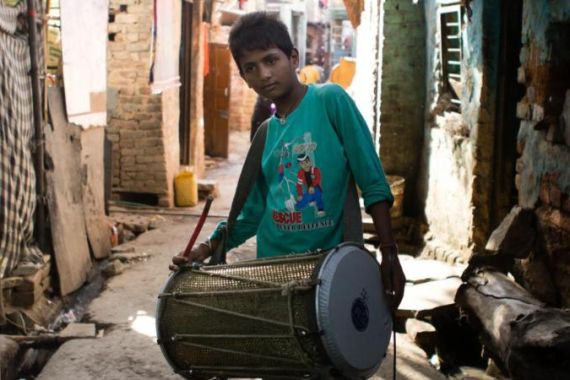
New Delhi, India – Residents of the world’s largest colony of street artists in central New Delhi, immortalised by Salman Rushdie in his celebrated novel Midnight’s Children, fear planners will break their promise to rehouse them if it is bulldozed.
The puppeteers, acrobats, jugglers, magicians, balladeers, and animal trainers, who have lived in the Kathputli shantytown for half a century, say proposals for a new luxury development threaten to end their rich cultural tradition.
Keep reading
list of 4 itemsUS returns ancient artefacts looted from Cambodia, Indonesia
Mandela’s world: A photographic retrospective of apartheid South Africa
Portrait by Gustav Klimt sells for $32m at Vienna auction
Thousands of families in Kathputli and their supporters have been demonstrating against the government scheme and have accused police of attacking protesters.
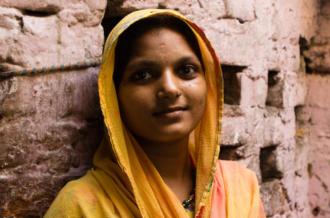 |
| Teenager Tarbeena is one of the first female magician in the colony. She’s been performing since she was 8 [Angel L Martinez Cantera/Al Jazeera] |
“We don’t want to leave the colony, this is our home and we don’t trust the authorities,” said magician Majid Khan as he deftly pulls an egg from his hat to screams of delight from children.
“The government should prove that they will provide houses for all of us.”
What was once a hub for about 500 families of Rajasthani gypsies and fortune tellers in Delhi’s Shadipur Depot area, Kathputli – which means “puppet” in Hindi – evolved into a famous slum housing a large variety of street artists.
But as creeping gentrification transforms the city, the Delhi Development Authority (DDA) intends to demolish Kathputli – a haven for more than 3,500 families just 15 minutes by metro from the city centre – and turn it into luxury flats and malls.
Under the Master Plan of Delhi 2021 city planners aim to transform the five-hectare area of crowded lanes, infested with flies and crisscrossed by rivers of sewage, into luxury residential houses, a commercial area and a high-rise car park.
It is not the first time that officials have tried to destroy the colony. Rushdie’s novel memorably described the slum being bulldozed in the 1970s – only for it to magically reappear a few months later.
Kathputli’s street artists have been threatened with eviction before, but now their protests are prompting authorities to take a hardline.
DDA project director S K Jain told the latest Hindi local news that if residents continue to protest not only will they face imminent eviction but they will not be granted new flats as promised under the original agreement to redevelop the area.
Speaking from his office in New Delhi, Jain blamed organised gangs for acting against the residents’ best interests.
“The main problem is that some mafias don’t want the rehabilitation to take place because they earn money by renting houses in that borough,” Jain told Al Jazeera. “Someone has to educate these people, this is for their own benefit.”
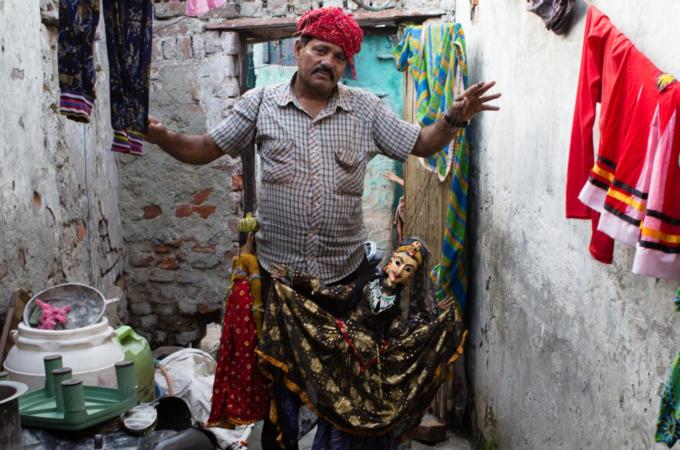 |
| ‘Kathputli’ – puppet in Hindi – has become a haven for around 3,500 families of street artists from all over India [Angel L Martinez Cantera/Al Jazeera] |
Unanswered questions
An agreement between the DDA and the real estate company Raheja Development offered to relocate the displaced families to small flats in the new high-rise buildings in the neighbourhood.
The part public, part private contract outlines that residents would move into a transitional camp 3km away for two years, the period that planners estimate it will take to rehabilitate the area.
However, families and supporting groups reject the proposals, highlighting a number of concerns and unanswered questions.
Last year, Delhi Urban Art Commission called for the scheme to be modified, arguing that the goal of producing affordable and sustainable homes for residents was not being met.
Earlier this year, a cooperative representing the artists, Bhoole Bisre Kalakar Sahkari Samiti, filed a lawsuit in the Delhi High Court highlighting unanswered questions such as what would happen to displaced families if it takes longer to build the resettlement homes.
The Hazards Centre, an organisation that offers legal support to poor communities, says claims that local mafias are resisting the project are baseless, and has accused police of attacking residents protesting against the government scheme last August.
The centre’s communications officer, Sunayana Wadhawan, accuses the DDA of trying to intimidate and bribe residents to accept the plan and of underestimating the number requiring rehousing.
“They counted only 2,641 households, excluding people from the list of beneficiaries using arbitrary criteria for resettlement,” Wadhawan said.
“However, a survey conducted by the residents shows that there are more than 3,400 families and they all have documents proving they’re eligible for new flats.“
The Delhi High Court’s decision acknowledged these concerns, underlining that all eligible families should be included in the list of beneficiaries and telling authorities not to use force during eviction.
However, its ruling also advised residents to collaborate in the rehabilitation process – prompting the DDA to urge them in its latest official notice to move to the transition camp as soon as possible.
Rajeev Sethi, the founder and director of the Asian Heritage Foundation
and a well-known artist and designer, alleges that corruption is at the root of the problem.
“DDA sold the land to the builder for only 6.11 crore [$995,000] – that’s peanuts for prime soil in Delhi’s centre,” Sethi told Al Jazeera. “It’s a scandal and an enquiry should follow.”
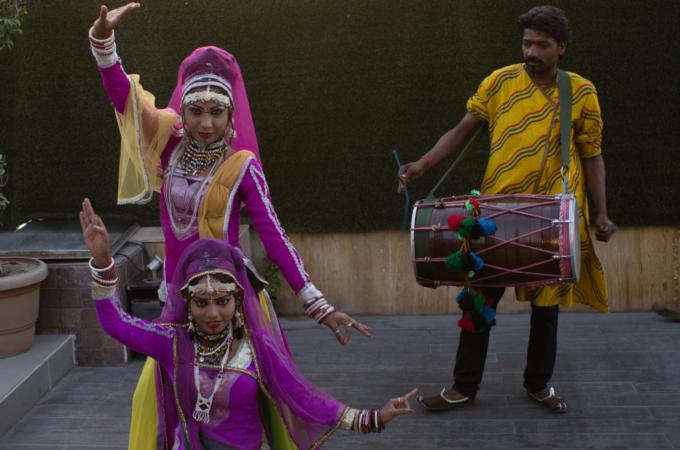 |
| Balladeers, acrobats, jugglers, magicians, and animal trainers have lived in Shadipur Depot for over 50 years [Angel L Martinez Cantera/Al Jazeera] |
Culture at risk
The gentrification of Kathputli will not only displace its community but could also erode India’s heritage. Street performance is seen as a last defence against the domination of western culture.
Resident Puran Bhat, 60, a world-renowned puppeteer and winner of India’s National Award for Traditional Arts, believes the protection of culture must take priority over unrestrained urbanisation.
He told Al Jazeera: “We want the government to promote our culture, tradition and arts by bringing people here to enjoy our cultural heritage. We don’t want big buildings, we want our art to survive.”
Puran serves as a reminder that Indian street artists have always accompanied prime ministers and other figures all over the world promoting the country’s rich and diverse culture.
The Asian Heritage Foundation has been helping traditional artists to perform and raise India’s profile abroad since the early 1980s, even though laws such as the Bombay Prevention of Begging Act (1959) criminalises street artists.
“We use them as the example abroad but we don’t give them the value they should have inside India itself,” said Rajeev Sethi.
“It does not make any sense if these people are somehow the ambassadors of our nation and then we treat them like beggars back in their homeland.”
But some Kathputli residents remain defiant, believing it is the magic inherent in their work that will ultimately save them.
Jyoti, an 18-year-old balladeer, mumbles as she prepares to dance onto the stage and tightens her payal – the traditional anklet decorated with little bells.
“If we’re evicted from Kathputli, we’ll reappear tomorrow,” she insists.
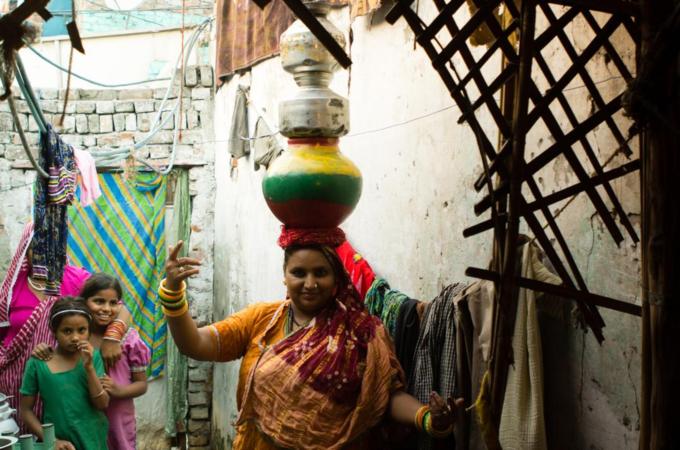 |
| DDA claims that some mafias don’t want the rehabilitation plan to take place because they earn money by renting dwellings [Angel L Martinez Cantera/Al Jazeera] |
Follow Angel L Martinez Cantera on Twitter: @AngelLMartnez